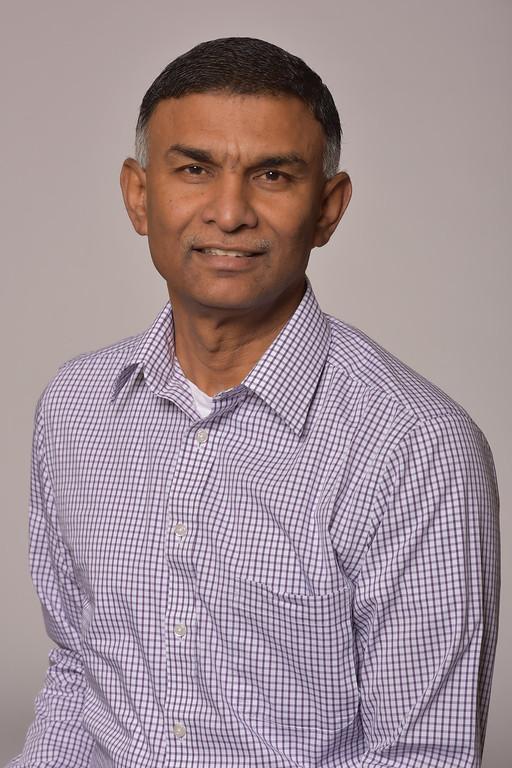MilliporeSigma Employee Spotlight: Ettigounder Ponnusamy

MilliporeSigma Employee Spotlight: Ettigounder (Samy) Ponnusamy
As part of our employee spotlight series, we’re sitting down with Ettigounder (Samy) Ponnusamy, fellow and global manager, green chemistry at MilliporeSigma, to learn more about the work he’s doing to move the needle. The life science business of Merck KGaA, Darmstadt, Germany operates as MilliporeSigma in the U.S. and Canada.
1. How did you get your start with MilliporeSigma?
In 1987, I was doing my postdoctoral research in peptide chemistry at the University of Illinois at Chicago, Medical Center after getting my doctorate in polymer chemistry from the University of Madras in Chennai, India. I was looking for an industrial job and found a job opening at Sigma-Aldrich advertised in Chemical & Engineering Newsfor someone with polymer and peptide chemistry experience. I applied in early November and received the offer right after Thanksgiving. I joined the company on January 18, 1988 as a research chemist and the rest is history — I never updated my resume!
2. Tell us about your background (where you grew up, went to school, your family, etc.).
I was born to a tiny and poor farm family in a very small rural village of less than 100 people in Tamil Nadu, India. I have a younger sister who still lives in India.
At the time, our village did not have a school. However, our village goldsmith’s son — who completed middle school in a different location — started a one-man school in the village common for the farm boys, teaching the alphabet and readings in Tamil (my native language). We paid him with grains and vegetables grown on our farm. We couldn’t afford slate or papers to practice writing, so we brought our own bag of sand, poured it on the floor, and learned and practiced writing on the sand with our fingers. After more than two years, the instructor ran out of materials to teach, so I enrolled in a government elementary school in a nearby village. There, I officially joined third grade — walking two miles both ways, every day. I balanced studying with farm work before and after school. I continued my education and graduated as valedictorian — a surprise to everyone!
After high school, I was accepted to the chemistry undergraduate program at a nearby college. I used the family bicycle to get there and completed my degree while also helping my father on the farm. I then wanted to apply for a master’s program, but no local colleges offered a chemistry program. However, my father saved some money by growing and selling vegetables so I could attend the University of Madras, where I received my master’s in physical chemistry. Next, I completed my doctoral degree in polymer chemistry.
It was typical for doctorate graduates to apply for a postdoctoral program outside of India — particularly in the United States — so I moved to Chicago in the fall of 1983. The wind blew me to success without any planning or guidance!
3. Explain your role at MilliporeSigma.
I joined the company as a research chemist and then worked as a senior chemist, research scientist, principal scientist, and now as fellow and global manager — green chemistry.
During my time here, I had the opportunity to work in the Polyamino Acids group. All polyamino acid projects start with phosgene gas, so I became an expert in this key reagent. Polyamino acid polymers are increasingly used in the biomedical field for targeted drug delivery applications. Our pharma and biopharma customers challenged me to solve their toughest problems, which includes making the polymers fit their strictest requirements.
To accomplish this and expand our business, I collaborate and technology transfer with our company’s various sites. My cumulative work has significantly contributed to the business.
4. How did you become interested in green chemistry?
Since my everyday work requires the use of highly hazardous chemicals, I wanted to make a positive impact on the Earth through green chemistry. But, one person cannot make a significant difference alone, so I tapped my network of scientists within our company to start the worldwide Green Chemistry team in 2007.
We meet virtually once a month, discuss everyone’s projects, brainstorm new ideas, and improve processes without adding any additional costs or compromising quality and quantity. After approximately seven years, our efforts led to major cost savings and our accomplishments were even highlighted in our quarterly and annual reports.
Our team has grown to approximately 60 members. We bring in key green chemistry stakeholders and experts to stay up-to-date on what is happening in the field.
5. Tell us how the DOZN™ tool was created.
We conducted a study to find out our customers’ opinion of green chemistry — the results were interesting and unexpected. Customers challenged us, asking questions such as “What are the metrics behind green chemistry?” and ”How do we know whose products are greener?” This was the starting point for our DOZN™ tool. Jeffrey Whitford, head of corporate responsibility and branding at MilliporeSigma, was instrumental in providing valuable guidance and the necessary resources to launch this tool. We’re continuing to make enhancements.
6. How do you envision the future of green chemistry, and how does MilliporeSigma fit into this vision?
I believe that green chemistry is the only way chemical enterprises can be successful for the long term. Companies will soon realize that green chemistry is not a financial burden, but rather a tool that is necessary to be competitive and meet customer demands. MilliporeSigma already proved the concept that green chemistry is a draw for our customers and helps sustain and enhance our leadership role.
7. What is one thing that few people know about you?
I’m very punctual (I learned from my grandfather!). One of my previous supervisors said that one can set the clock based on what time I come to the office. I’m also reliable and often the “go-to” person for coming up with new ideas and helping solve problems.
8. We understand you hold several patents and honors. What has been your biggest accomplishment so far?
Above all the patents and honors, I’m very proud to have received the Outstanding Scientist Award from the Academy of Science of St. Louis. I was also inducted into the organization as a fellow in 2011 — becoming the first and only scientist from our company to be recognized by the Academy.
I received my fellow recognition at our company in 2015.
9. What do you like to do outside of the office (or lab)?
Gardening has been my main hobby my entire life. Volleyball and walking are my favorite activities, but I recently had to quit volleyball following a rotator cuff injury. That doesn’t stop me from walking every day, though.
10. If you could pick one superpower, what would it be?
According to the International Health, Racquet & Sportsclub Association, the global health club industry generated $87.2 billion in revenue in 2017. People are spending money to burn calories without any return other than health benefits. I would like to have the ability to capture these wasted energies stored and use them like batteries or transmit them to the power grid. This would help reduce fossil fuel usage and improve overall global sustainability.

